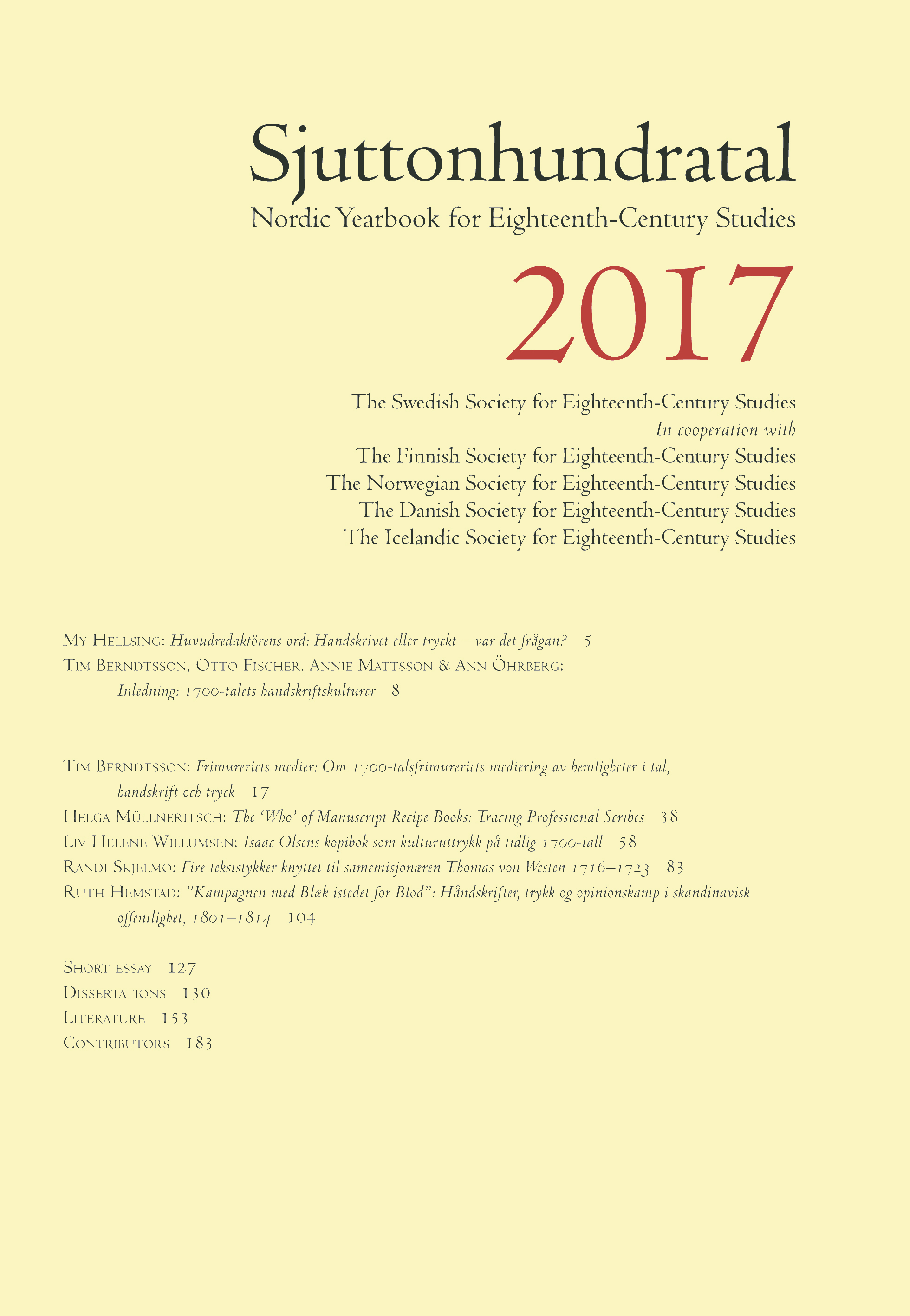Isaac Olsens kopibok som kulturuttrykk på tidlig 1700-tall
DOI:
https://doi.org/10.7557/4.4156Keywords:
Isaac Olsen, Hand-written document, Eighteenth century, Finnmark, Northern Norway, Sami mission, Discourse analysis, Narratology, Voices, Gérard Genette, Cultural study, History of mentalitiesAbstract
Isaac Olsen's Copy Book as a Cultural Expression of the Early Eighteenth Century.
This article deals with a copy book written by Isaac Olsen, dating from the early eighteenth century. Isaac Olsen was a teacher and catechist working among the Sami people in the region of Finnmark, Northern Norway. He was a predecessor of the Sami missionary Thomas von Westen. Isaac Olsen left a handwritten copy book of nearly 1000 pages, today preserved in The Museum of Cultural History in Oslo, Norway. The copy book is a compilation of documents related to Isaac Olsen’s work and person. Most of the documents are written in his own hand, but the book also contains documents written by governmental officials such as regional governors and provosts, and even the king in Copenhagen. The article focuses on the voices that may be heard in the texts contained in Isaac Olsen’s copy book: the pedagogical voice, the religious voice, the voice of popular culture, the voices of state officials. Attention is also paid to the contemporary practice of writing and the practice of professional copying. Isaac Olsen’s copy book, which dates from the early 1700s, is seen as a valuable historical source that may give insight into the mental horizon of an individual as well as knowledge about the society in which he lived.









